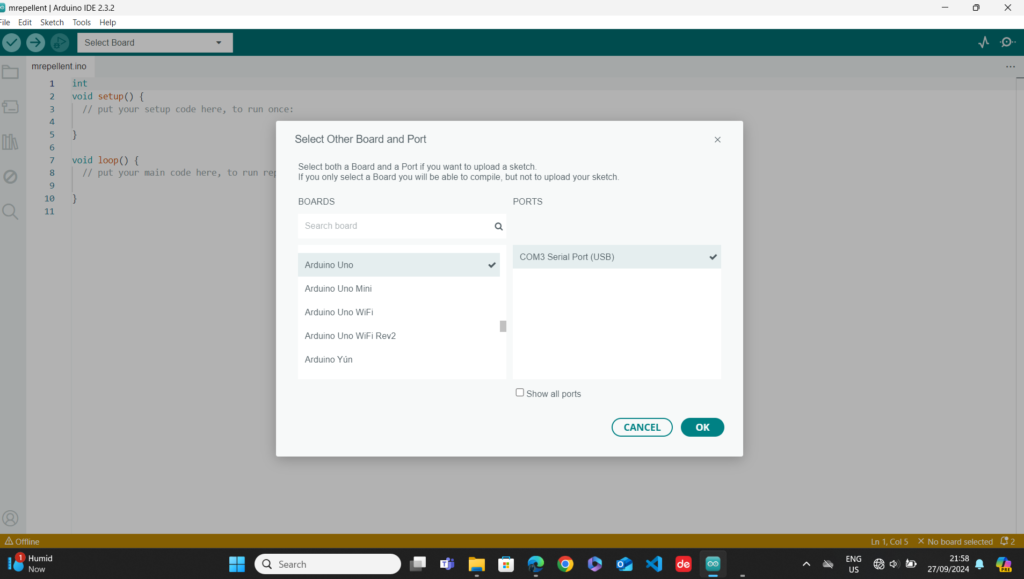Designed and created by Vishwa GW.

In Australia, where I lived for the past 5 years, there are no mosquitos. But on the other hand, in my home country Sri Lanka there are too many. So, There are several methods to prevent mosquito biting. But most of them are very unhealthy and temporary methods such as mosquito coils, and mosquito nets.
So, I was thinking about a new idea to prevent mosquitos from coming inside the room and ultimately the house. I was reading a research paper about how frequency affect animal behaviour, on the same day later (If you are interested in reading it, You can find the article here). So, suddenly I realised that I had the answer to my problem. Frequency can be used to communicate with animals as there are specific ranges of sensitive frequencies for different species.
For example, 23 – 54kHz is very sensitive for dogs. So, this frequency range is generally used in dog whistles. Just like that, the best frequency for mosquitos is 31kHz.
Setting up the system:
To create the prototype device, we need to understand some basic electronics. For this project, I used an Arduino microcontroller as it is very easy to create the system and program it.
Following is the component/requirement for prototype design:
- Arduino UNO microcontroller board – 1
- piezoelectric speakers – 2
- jumper/connecting wires
- header pins
- power supply (computer or a battery-9V)
- Arduino IDE
- soldering ion and soldering lead wires
the system is easy to set up.
- take a header pin with 3 pins and connect the read wires (which connect to the inside of the speaker) of the speakers in both corner pins. These two pins will connect to 9 and 11 output pins in the UNO board.
- Then the remaining two wires will be also connected to another header pin with 2 pins and it will connect to the Ground pins in the UNO board.
- then the system is ready. Now we have to write the code.
This is my GitHub profile repository for the full code. you can download it. For learning purposes, I did supply the explanation for the most part of the code.
After uploading the code, we can use the system.

Piezoelectric will transfer the uploaded frequency to thin air. The transmitting range can be modified through the code.
Final Note:
This is a simple prototype system to demonstrate the concept of frequency to control animal behaviour. This is only a demonstrating prototype. But this concept can be modified into a useful, environmentally friendly mosquito repellent system.
